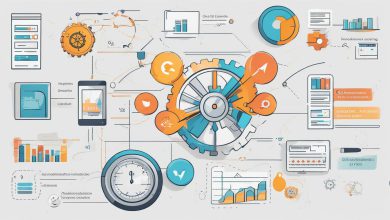
Welcome to the exciting world of Dart development within the Flutter landscape. As a developer, you must navigate this complex and dynamic space to excel in your craft. You need to understand the principles and best practices that guide effective Dart development, enabling you to build robust, high-quality mobile applications.
In this section of the article, we will explore those principles in depth, giving you the knowledge and tools to navigate the Flutter landscape. We’ll uncover the nuances of Dart development, and share tips and tricks that will help you to write clean, maintainable code. By following these principles and best practices, you’ll build applications that are not only efficient and performant but also easy to maintain and extend.
So, let’s dive in and explore the principles for effective Dart development in Flutter.
Understanding the Flutter Landscape
To become skilled in Dart development, it’s crucial to have a comprehensive understanding of the Flutter landscape. Navigating the Flutter landscape involves familiarizing oneself with the various tools, libraries, and frameworks that are available for building mobile applications.
Flutter is an open-source framework that enables developers to build robust mobile applications for iOS and Android platforms. It offers several benefits such as hot reload, widget composition, performance optimization, and a rich set of UI components. By leveraging these features, developers can build applications that run smoothly and are visually appealing for end-users.
In addition to the core framework, Flutter offers a wide range of plugins and packages that extend its functionality. These plugins help developers to add new features and capabilities to their applications. For example, the FlutterFire plugins provide a suite of Firebase plugins for authentication, real-time messaging, and cloud storage.
Principles for Effective Dart Development
Effective Dart development requires adherence to certain principles and best practices that promote clean, maintainable, and efficient code. Whether you are a beginner or an experienced developer, following these principles will enable you to write high-quality Dart applications.
Here are some of the key principles for effective Dart development:
- Write reusable and modular code: Writing reusable and modular code is crucial for efficient code management and reduces redundancy. Modular code is easier to understand, test, and maintain.
- Optimize performance: Poorly optimized code can lead to slow application performance, affecting user experience. Performance optimization techniques such as lazy loading and using static variables can improve application performance.
- Write clean and maintainable code: Writing clean and maintainable code involves adhering to best coding practices such as avoiding code duplication and breaking down complex tasks into smaller functions. This ensures that the code is easy to read, understand, and modify.
- Follow effective error handling practices: Proper error handling practices can prevent application crashes and make applications more resilient. A good error handling mechanism should provide users with meaningful error messages and allow developers to diagnose errors easily.
Adhering to these principles will help you write maintainable, efficient, and high-quality Dart applications that meet user expectations.
Implementing Effective Flutter Development
Implementing effective Flutter development requires applying the principles discussed in the previous section. By following these principles, developers can create efficient, maintainable, and scalable applications. In this section, we will discuss some of the best practices for implementing effective Flutter development.
Widget Composition
Widget composition is a critical aspect of Flutter development, as it allows developers to create complex user interfaces efficiently. Flutter widgets are the building blocks of the user interface; they can be grouped into smaller widget trees, then combined into more complex widgets, which can be further nested to create even more complex layouts. By creating modular and reusable widgets, developers can create scalable and maintainable applications.
State Management
Managing application state is a crucial aspect of Flutter development. Flutter provides several ways of managing application state, including lifting state up, using stateful widgets, and using state management libraries such as Provider and Bloc. By choosing the appropriate state management technique for your application, you can create robust and scalable applications.
UI Design
UI design is an essential aspect of Flutter development. Flutter provides several customizable widgets and themes that allow developers to create unique and beautiful user interfaces. By following the principles of good UI design, such as using appropriate fonts and colors, creating consistent layouts, and providing clear navigation, developers can create engaging and intuitive applications.
Debugging Techniques
Debugging is a critical skill for any developer. Flutter provides several tools for debugging, such as the Flutter DevTools, which allows developers to inspect the application’s state, debug UI issues, and analyze performance. By using these tools effectively, developers can identify and fix issues quickly and efficiently.
Implementing effective Flutter development requires applying the principles of good coding practices, optimizing performance, and creating maintainable code. By following these principles, developers can create robust and efficient applications that provide an excellent user experience.
Conclusion
In conclusion, mastering Flutter development requires a deep understanding of the Dart language and its best practices. By navigating the Flutter landscape and implementing effective Dart development principles, developers can create high-quality mobile applications.
Continuing the Learning Journey
To continue improving in this area, it’s essential to stay updated with the latest developments and explore new tools and frameworks within the Flutter landscape. Communities such as the official Flutter community and forums like Reddit and Stack Overflow offer helpful insights and valuable resources.
The Importance of Continuous Learning
Remember, mastering Dart and Flutter development is an ongoing journey. Continually learning and adapting to the latest technologies and best practices is essential for remaining competitive in this dynamic field. Embrace the challenges and never stop learning to stay ahead of the curve.







